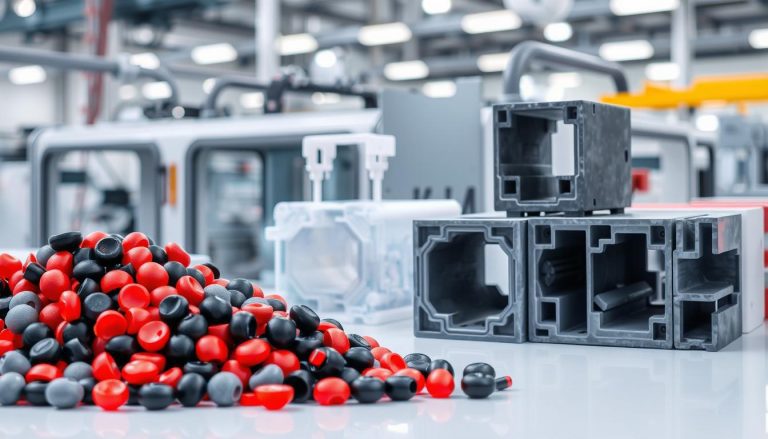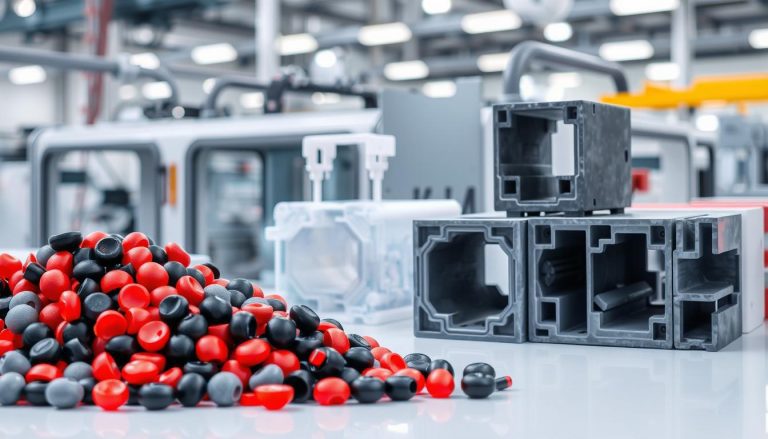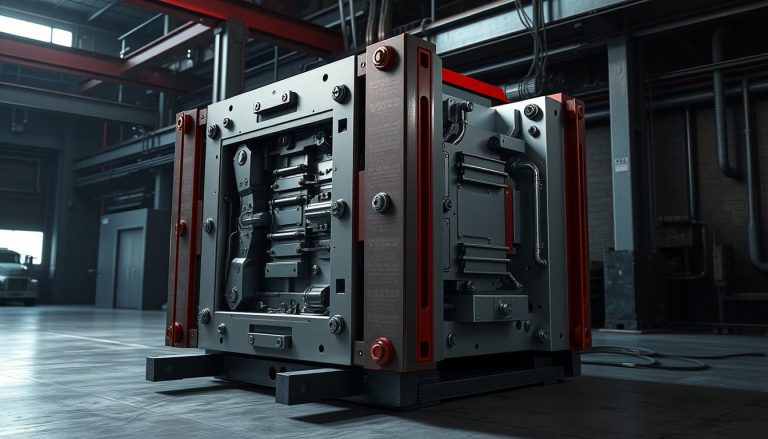Nowadays, there are many ways to use environmentally friendly plastics such as PLA. PLA, also known as polylactide, is a plastic that is biodegradable. It is used in many areas thanks to new manufacturing technologies. It helps to manufacture products and promotes a more sustainable use of resources.
In this section, we look at the advantages of PLA in injection molding. We see how important these technologies are for modern manufacturing.
Key findings
- PLA is an environmentally friendly, biodegradable plastic.
- Injection molding processes offer efficient manufacturing processes for PLA.
- Innovative production technologies promote the use of PLA.
- The use of PLA contributes to sustainable production methods.
- PLA offers numerous advantages over conventional plastics.
Introduction to PLA and injection molding
PLA, also known as polylactic acid, is a bio-based plastic. It is made from renewable raw materials such as corn starch. These sustainable materials make PLA very popular in the industry.
The injection molding process is often used for the production of PLA. It enables the production of precise products in large quantities.
In the injection molding process, PLA is heated and injected into a mold. After cooling, a solid product is formed. This product is used in many areas.
Beim Spritzgussverfahren wird PLA erhitzt und in eine Form gespritzt. Nach dem Abkühlen entsteht ein festes Produkt. Dieses Produkt wird in vielen Bereichen eingesetzt.
PLA in production helps companies to achieve ecological goals. It also enables modern solutions in work processes. This creates new opportunities for design and sustainable processes.
What is PLA?
PLA is a bio-based plastic that is becoming increasingly popular in the manufacturing industry. It is made from natural materials such as corn starch or sugar cane. PLA is often used for injection molding and additive manufacturing.
Definition of PLA
PLA is a thermoplastic with great properties. It is environmentally friendly because it is made from renewable raw materials. The manufacturing process saves energy and protects the environment.
Properties of PLA
PLA has many great properties. This makes it a great material for many purposes. The most important ones include:
- High rigidity
- Good chemical resistance
- Rapid biodegradation
PLA is environmentally friendly, but not as heat-resistant as other plastics.
If you would like to find out more about plastics, visit this page: Plastics in injection molding.
Injection molding process at a glance
The injection molding process is an efficient method of producing plastic parts. It was invented in the 19th century and has evolved ever since. The process involves important steps:
- Granules are heated and injected into a mold.
- The material cools and solidifies in the desired shape.
This technology is fast and precise. This makes it very popular in plastics processing. There are many ways to customize shapes. The injection molding process is used in many areas, from everyday objects to industrial parts.
PLA beim Spritzgießen: Verwendung und Vorteile
PLA has many advantages, especially in injection molding. It is environmentally friendly and easy to process. That is why it is very popular with many in the industry.
Environmental friendliness of PLA
PLA can be completely degraded and has a small CO2 footprint. This makes it a better choice than conventional plastics. PLA is a good choice for companies that want to work in an environmentally friendly way.
Optimum processing properties
PLA is easy to process because it flows well. It can be processed at temperatures that are not too high. This saves energy. PLA can be easily combined with other materials to create new products.
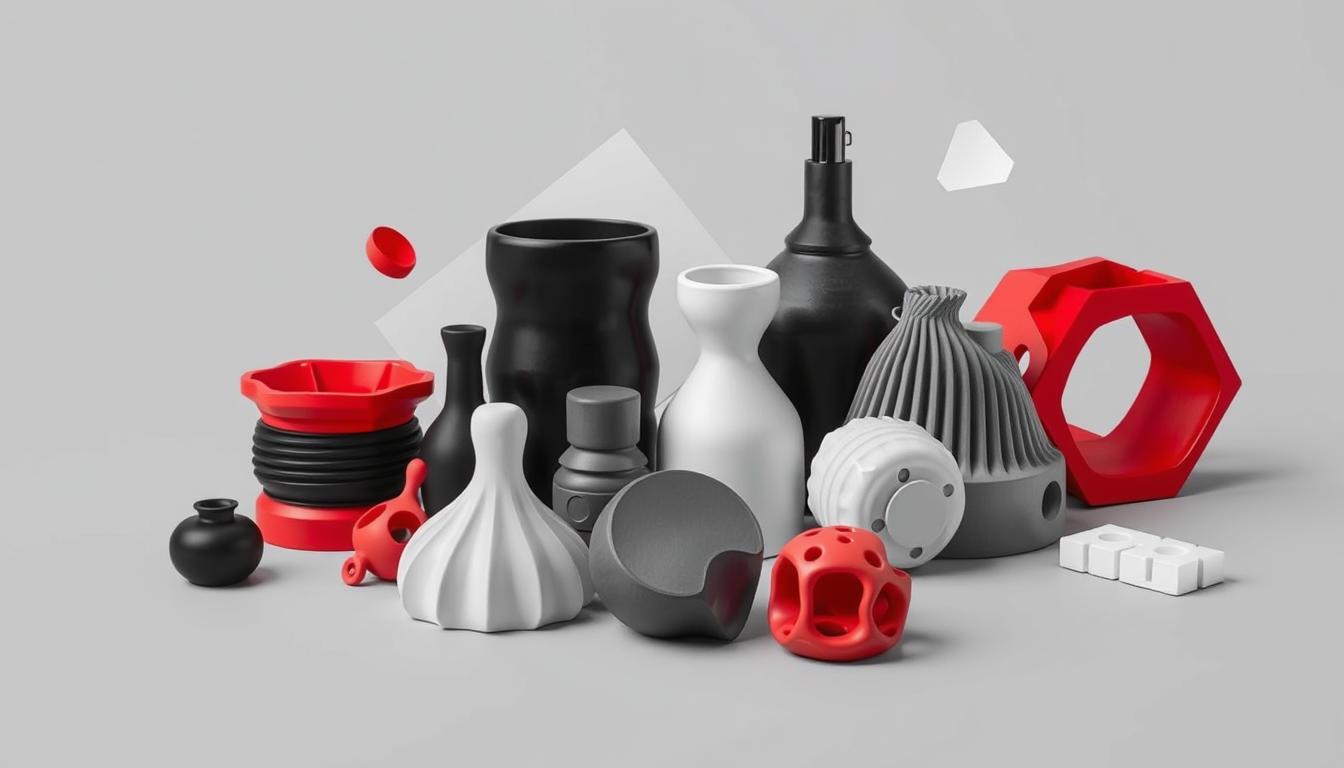
| Criterion | PLA | Conventional plastics |
|---|---|---|
| Biodeg | radable | YesNo |
| CO2 footprint | Low | High |
| Processing temperature | Moderate | High |
| Versatility | High | Medium |
Application examples of PLA in injection molding
PLA is used in many areas because it is environmentally friendly and economical. PLA is particularly popular for packaging. It makes it possible to design products in a versatile and efficient way.
Packaging made from PLA
PLA is being used more and more for packaging. Biodegradable packaging is great for the food industry. It is environmentally friendly and strengthens the image of sustainable companies.
Common products that use PLA packaging are:
- Transport packaging for food
- Snack bags and foils
- Disposable cups and tableware
Consumer goods and industrial applications
PLA is not only good for packaging. It is also used in many other areas. From toys to medical products, PLA shows its versatility.
- Toy production with special designs
- Enclosures for electronic devices
- Medical outer packaging and aids
Advantages of PLA compared to conventional plastics
PLA is becoming increasingly popular in the industry. It has many advantages over conventional plastics. One major advantage is __sustainability__. PLA is made from plant-based raw materials and can be biodegraded.
Sustainability
PLA is more sustainable than many other plastics. It is made from plants such as corn starch. This means less CO2 emissions during production.
PLA can be completely composted. This makes it an environmentally friendly choice. It helps to reduce the ecological footprint.
Cost efficiency
PLA is also very advantageous in terms of cost. Thanks to new technologies, manufacturing costs have become lower. This saves companies money.
The simple and efficient manufacturing process is a big plus. This makes PLA a good choice for many applications.
Challenges and limitations of PLA in injection molding
PLA in injection molding has PLA challenges. It is environmentally friendly, but there are challenges for manufacturers. The main challenges include:
- Impact resistance: PLA is less impact resistant than many thermoplastic materials. This limits the possible applications, especially under high mechanical stress.
- Heat resistance: PLA is not heat resistant. Products that experience high temperatures can be damaged as a result.
- Water sensitivity: PLA suffers in damp environments. This is another limitation of injection molding that must be taken into account.
It is important to be aware of these challenges with thermoplastic materials such as PLA. Measures must be taken to improve performance.
| Challenge | Description |
|---|---|
| Challenge | Description Impact strength Lower impact strength compared to conventional plastics. |
| Heat resistance Low | heat resistance, unsuitable for heat-resistant applications. |
| Water sensitivityLoss | of quality in damp environments. |
The future of PLA in injection molding
The future of PLA in injection molding looks promising. The industry is constantly evolving. New technologies allow PLA to be used in many new areas.
Researchers and companies are working on improving PLA. They want to make it more resistant to heat and impact.
Innovations and developments
New studies show great progress. They show that PLA is becoming more promising. New materials and techniques are improving its properties.
Special additives could make PLA even better. They could make it suitable for more demanding applications.
Market forecasts
The demand for environmentally friendly materials is increasing. Market analyses show that PLA will become more popular in the coming years. Especially in the packaging industry.
Companies are starting to use PLA products more. They want to be more environmentally friendly. This strengthens the position of PLA and creates new opportunities.
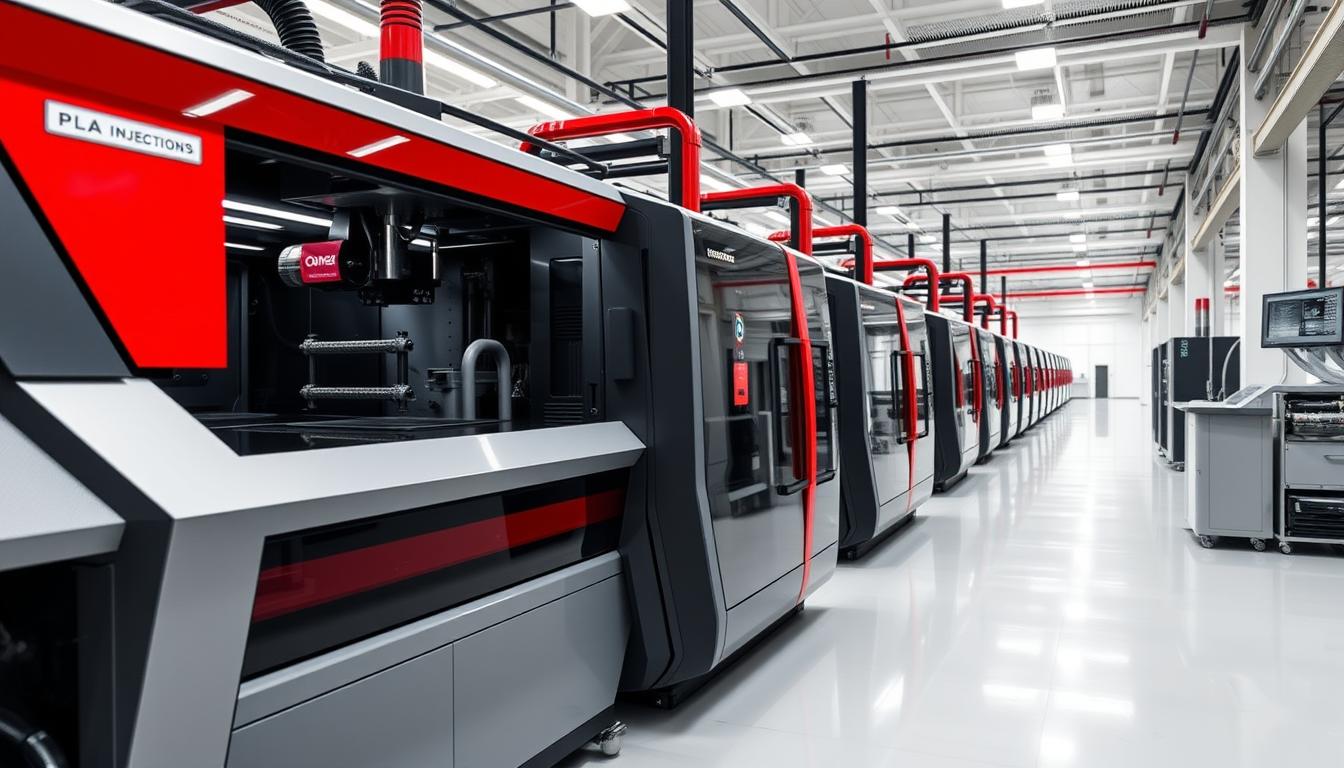
| Aspect | Traditional plastics | PLA |
|---|---|---|
| Sustainability | Low | High |
| Market | evelopment | StableGrowing |
| Cost efficiency | Variable prices | Competitive |
| Innovation potential | Limited | High |
For more insights into the development of PLA and the market, take a look at small series in 3D printing production.
Recycling and disposal of PLA products
Recycling and proper disposal are important for the environmental benefits of PLA. PLA, a biodegradable plastic, can be recycled by composting or recycling PLA. Unlike other plastics, PLA breaks down quickly, making it a good choice for the environment.
Good disposal helps PLA to biodegrade. It is processed in special environments with organic waste. Modern recycling processes make it possible to produce valuable materials. The SustRecPLA project is developing solutions to reduce PLA waste.
Unternehmen sollten in Recycling PLA und Entsorgung investieren. So nutzen sie die Vorteile nachhaltiger Materialien voll aus. Recycling verringert Abfälle und Kohlenstoffemissionen. Diese Schritte helfen, eine bessere Zukunft für PLA zu sichern.
Conclusion
PLA in injection molding shows great growth potential.It is more environmentally friendly than conventional plastics.The customization options and constant innovations make it future-proof.
Interest in sustainable materials is growing.PLA will therefore be an important part of future production technologies.Its ease of processing and versatility support this trend.
The development of PLA and the positive market forecasts are excellent.It will play a key role in plastics processing.The innovative power behind PLA is leading the industry into a more sustainable future.
FAQ
What is PLA and where is it used?
PLA, short for polylactic acid, is a plastic made from plant-based materials. It is often used in 3D printing technology and injection molding. PLA is environmentally friendly and biodegradable.
What advantages does PLA offer compared to conventional plastics?
PLA has many advantages. For example, it is more environmentally friendly and degradable. It also has good properties for injection molding.
How does the injection molding process with PLA work?
PLA is first heated. It is then placed in a molded syringe. There it cools down and becomes solid.
What areas of application are there for PLA in injection molding?
PLA is used in many areas. For example, in packaging, toys and electronic housings. It can also be found in medicine.
What challenges does PLA face in injection molding?
PLA has some weaknesses. For example, it is not as heat-resistant as other plastics. It can also lose quality in humid environments.
What does the future hold for PLA in injection molding?
The future of PLA looks bright. Research is making PLA better. It is becoming increasingly popular in the packaging industry.
How are PLA products recycled and disposed of?
PLA can be recycled. It breaks down quickly under the right conditions. This makes it a sustainable disposal option.



